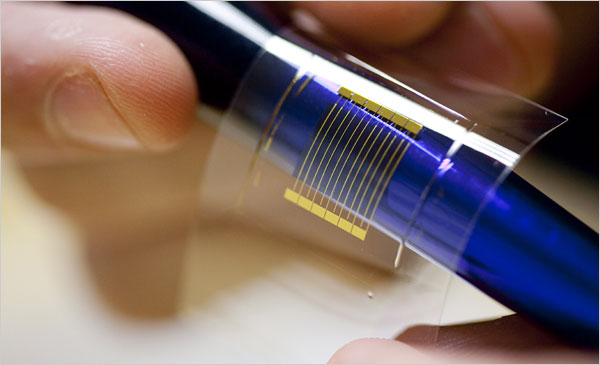![]() Global research and development (R&D) spending around the world is showing signs of renewed health as a broad mix of tech companies prepare for the coming economic rebound by investing in new and emerging technologies.
Global research and development (R&D) spending around the world is showing signs of renewed health as a broad mix of tech companies prepare for the coming economic rebound by investing in new and emerging technologies.
Some of the biggest spenders are electronics, information and communications technology companies, with Asia, Taiwan, India and Europe showing strong drawing power for companies seeking to tap into local technology talent. Biotech and clean energy are also attracting significant R&D investment.
Among recent R&D spending developments is a report from SiliconRepublic.com that Irish technology firm IC Mask Design, [through the efforts of Enterprise Ireland] is set to invest almost half a million euros in R&D, specifically targeting software for the acceleration and semi-automation of the circuit-design process. For Ireland, this investment represents a significant market advancement that will "push the business from a services-based one in the semiconductor space to the higher technology end of electronic design automation.
From Taiwan comes a report that PC maker Dell Inc. plans to make a major cloud computing investment in where it will add more than 100 people next year as part of its plan to expand its corporate and cloud computing-related R&D center.
"Cloud computing is the biggest growth driver for our enterprise market today, " a Dell spokesman said, referring to the emerging technology that allows users to access data saved in remote servers through phones or computers. The Taiwan research center currently has around 500 employees, he added.
As reported in an earlier post the South Korean government has announced plans to invest 5% of the nation's GDP into R&D by 2012, one of the highest rates in the world, according to reports. Funds are expected to target priority sectors such as information technology, energy and environmental technology, nanotechnology and biotechnology. South Korea has strengthened emphasis on green technologies. According to reports, the government plans to invest $46 billion over the next five years in clean energy technology R&D, manufacturing, and deployment.
According to some experts Asia is set to become the main destination for the location of business R&D, overtaking Europe and the United States and leading the world in research. Accordong to an EU taskforce report, China and India will be global powers in R&D, accounting for around 20% of the world's research investment -- more than doubling their current share, according to "The World in 2025."
In India, U.S,-based Motorola is gearing up to make its Indian research activities a global hub for wireless broadband technology. The company is said to be drawing up a blueprint which will entail a significant expansion in investment, research capabilities and headcount for such research in India.
Published report indicate that Motorola has a dedicated team of around 500 engineers at its R&D centrers in Bangalore and Hyderabad and invests $30-40 million annually in India for development and deployment of fourth generation (4G) wireless broadband technologies like WiMAX and Long Term Evolution (LTE).
A Motorola exec Sudhakar Ramakrishna explained the rationale for choosing India.
"While our labs in the US are the largest for wireless broadband research, China and India are quite close by. We plan to grow the scope of our Indian research manifold. The Indian labs are also supporting our current global trials for LTE in China and Japan."
Also reporting new R&D investment on the wireless front is semiconductor group Icera, which said it is making significant new investments at its Sophia Antipolis site to speed-up research and development in LTE, (Long Term Evolution) which is the last step toward the 4th generation (4G) of radio technologies designed to increase the capacity and speed of mobile.
Through this investment up to 50 engineers in mobile communications may be recruited over the next three years. France's Sophia Antipolis technology region is said to be one of the leading regions in the world for wireless technology development.
In a recent report in BusinessWeek EU firms are said to have outpaced their US counterparts in growth in research and development spending, according to a new scoreboard published by the European Commission .
Overall, worldwide corporate investment in R&D increased by 6.9 percent in 2008 despite the financial crisis, with EU companies (up 8.1 percent) outstripping those in the US (5.7 percent) and Japan (4.4 percent).
"Even in bad times, keeping up investment in R&D is very important because when we come out of the crisis the firms will be fitter and more competitive," said the EU's science and research commissioner Janez Potocnik in reference to the the new scoreboard.
As the R&D investment trends accelerates observers are also keeping a close eye on India.
According to report in siliconindia.com, global firms have been increasing R&D investment in India for the pastthree years - a trend that is likely to accelerate.
In 2007-08, Asia accounted for 27 percent of the R&D investment made by the top 1,000 global companies. And among the emerging geographies, the contribution of India is significantly high. Of the total R&D spend in emerging markets in 2008 of $7.2 billion, India's accounted for $4.2 billion, the report, produced research firm Zinnov Management Consulting.
"Since most R&D centres have matured over the years, the focus for MNCs has now shifted to innovation and access to rapid growth markets," the report added.
Cost arbitrage and access to talent are no longer the only reasons favoring India. Now the major factors include innovation as well, says Chaitanya Ramalinge Gowda, Director, Zinnov. India is no longer just a back-end centre. With multi-nationals having been present in the country for a reasonable period of time, Indian centers have attained a certain maturity level and built certain capabilities from which they can only grow stronger and higher.
The talent pool at the R&D centres in India has attained a critical mass over the last few years, says the Zinnov report. About 1,73,000 people work at these centers in the country. Along with increased university incubations and partnership programs, a growing domestic market and a healthy start-ups, the innovation ecosystem in India is undergoing invigorating growth. experts say.


